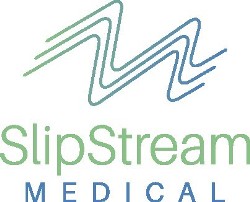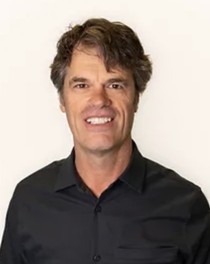










-
Slipstream Medical’s Revolutionary Soft Catheter and Needle Advancement Technology is Increasing Patient Comfort and Reducing Needle Sticks
 Jay Muse
Jay Muse
Founder/CEO
Slipstream Medical
https://www.slipstreammedical.com/
Contact:
Jay Muse
801.725.0864
jay.muse@slipstreammedical.com
Interview conducted by:
Lynn Fosse, Senior Editor
CEOCFO Magazine
Published – November 27, 2023
CEOCFO: Mr. Muse, what led to the creation of Slipstream Medical?
Mr. Muse: Slipstream was created to commercialize a novel medical device developed by Piper Access to help reduce the number of IV catheter needle sticks. The innovation was motivated by a paper authored by Dr. Helm in 2015, called “Accepted but Unacceptable: Peripheral IV Catheter Failure”. The title of that paper says it all. So, with Piper Access, we developed a catheter to reduce the failure rate. And again, Slipstream Medical bought that asset to commercialize it.
CEOCFO: Would this be the Stiletto™ Extended Dwell Catheter?
Mr. Muse: That’s correct. The asset we acquired from Piper Access was called the Stiletto™ Extended Dwell Catheter.
CEOCFO: How does it work?
Mr. Muse: In general, the longer the catheter, the longer it lasts before it fails. The first attempt by manufactures was to make the catheter longer, and that helped, but it only got them so far. We believed that the other big factor was catheter softness. It is easy to understand that a stiff metal needle is not going to last as long as a soft plastic catheter in a vein. I suppose it’s somewhat like the difference between a hard and soft contact lens. In general, the eye can accommodate the soft contact lens for longer. But when we tried to put the super soft catheter into a vein, it wouldn’t advance. It was like trying to push a rope uphill. So, we invented a way to advance a super soft catheter into a vein. It is in our delivery mechanism where our intellectual property lies. It’s about getting that incredibly soft catheter into the vessel.
CEOCFO: How long did it take to go from idea to a finished product?
Mr. Muse: We started in late 2016 and we got some early success, and we were highly encouraged until we hit the COVID years. COVID-
The results from that first pilot study were truly outstanding. That was when we knew we had something. Our clinical results enabled us to start SlipStream Medical and raise money rapidly to commercialize the catheter rather than sell it as an asset.
CEOCFO: Why that decision?
Mr. Muse: There is always the question of value. Stiletto is a great product for a small company to sell directly early on, where the total market value has not yet been fully established. What you want to do in the commercialization is retire all the risk while rapidly improving the product. Large medical device manufacturers are like complex machines built to provide expansive sales and clinical support to hospital systems. At some point, if Stiletto grows large enough it might make more sense to put it into their good hands, as they could expand the product’s reach, and thereby help more patients. We’ll see.
CEOCFO: Where are you today?
Mr. Muse: After our pilot study, we immediately went into backorder. We’ve spent the last eleven months developing equipment to make the device. You just cannot make medical devices like Stiletto entirely by hand because that approach just won’t deliver the appropriate price and level of quality. The equipment to manufacture the devices is more complicated than the device itself, and it’s taken a bit of time and money to complete, but we’re making it happen.
CEOCFO: Are you manufacturing in your facilities?
Mr. Muse: We are not nearly big enough. Companies our size typically use contract manufacturers, and we are using a contract manufacturer.
CEOCFO: How far will your recent funding take Slipstream and how are you able to get the message across?
Mr. Muse: We raised everything we need to achieve breakeven. It is hard to raise money if you do not have results. At every stage of funding from the very first concept of the device, you must have great results to get money. We made the first working device for about $30, to demonstrate feasibility of the approach. We used those results to raise a bit more money. We used that money to hit the next milestone to raise more money, and so on. My feeling is that you do not take the money all at once, and you shouldn’t get millions for just an idea. You get millions from proving that a series of ideas work by testing prototypes.
As an example, we had a clinician use one of our early prototypes in an animal study as one of our milestones. It worked exceptionally well, so we raised a bit more money. Once we got our regulatory approval, we were able to use the device on some patients in the pilot study. It went well, but if the results had not gone well, it would have been extremely difficult, if not impossible, to raise the money. You raise money based on results.
I suppose in some cases, you could get money just based on your reputation. Elizabeth Holmes was able to leverage her affiliation with Stanford and influential people to raise money. But that is not how we have ever raised money. We have only raised money through demonstrating results. We do not try to color or shade anything; it is just hard facts.
CEOCFO: Would you give us an idea of how many people this could help, and what type of diseases, conditions, or age?
Mr. Muse: It could help anyone, regardless of age, who needs IV therapy greater than 4-
Recently a good friend had to have some surgery at a local hospital, and she had seven sticks, two of which were in the surgical suite, then they called in a specialist from the ICU and she got five more sticks before they were successful. One of them resulted in a hematoma and a clot a little over two inches. It ended up resolving itself but sometimes they don’t, and it leads to other complications.
In our pilot study with the Stiletto, 95% devices made it to 7 days without an issue, and 86% were problem free at 28 days. On top of that, our device can be used for blood draws, so no need for additional sticks to draw blood. We had a patient for up to fifty-
CEOCFO: Does the medical community recognize the problem and do they care?
Mr. Muse: Some care, but my feeling is that many do not care enough. IVs are cheap and clinicians have just gotten used to repeatedly sticking them in. I got a chance to listen to Dr. Helm at AVA last year, and I could sense his frustration. Some devices have been developed that have helped to a small extent, but not enough energy has gone into this from industry. I’ve wondered if healthcare workers see it as just a pain problem, and not a morbidity problem. Maybe they see it as just some extra needle sticks. But let's say for instance that you’re waiting for a fistula, and you need to preserve your vasculature for that procedure. In those cases, it’s critically important to reduce the number of sticks.
But I think that it just isn't about pain; it is also about all the complications that come from poking someone repeatedly. It’s possible that every time you poke someone you are exciting an inflammatory response, leading to increased healing time. Why do that? Let's just not do it, let's just poke someone once and be done with it. One and done. At Slipstream we say that our goal is and always will be “One patient, one stick.”
CEOCFO: How are you going to change that at Slipstream?
Mr. Muse: With a spark. The results from the pilot study are starting to get around, and we’re seeing enthusiastic adoption of the device. The feedback from the nurses is that it makes it easier on them if they don’t have to keep going back to the “frequent flyers”. It’s been a lot of fun to talk to them about which patients it has the greatest impact on. Once you see it work, you can’t unsee it. It’s hard to let it go once you’ve placed a few. They’re big fans.
CEOCFO: Are there challenges with insertion?
Mr. Muse: Not especially. Of course, there’s always some training involved, even if a hospital changes from one brand of IV to another. We do a thorough job of training the nurses so that they can be as successful as possible. That said, it’s not been very difficult for nurses to learn how to use the device, and some of them have picked it up very quickly. For example, for the pilot study I trained two nurses, watch one placement, and gathered my stuff and left. They did it all on their own from there.
CEOCFO: Where do you see the challenges; what are you on the lookout for?
Mr. Muse: The known challenge is competing with the huge medical device manufacturers. It seems that they have a strong grip on decision making process through contracts and sales rep relationships with clinicians. It is very difficult to get in between that relationship. In many cases, they have known each other on a first-
Another challenge is the folks that do not want to change. Whenever you try to launch something there are the folks that take it early, folks that take it later, and folks that never take it. It is amazing how many preconceived notions there are there. But so far, everyone who has tried it has converted. We’ll keep working at it until we eliminate as many IVs as possible.
In the end, the device just has to speak for itself, and it has to be so good that it overcomes all of the impediments.
CEOCFO: And it is!
Mr. Muse: So far so good, but I think that it’s going to get tougher. I just did a tradeshow and I was amazing by how many clinicians had a strong bias against extended dwell catheters. One of them said, "Oh, we tried devices like those, but they don't work." So that is a problem. Folks have tried a lot of these products in the past as far back as the early 90s, and they apparently did not work as well as expected. It seems like there’s been some poisoning of the well so to speak.
But our 1st account’s health system is known for being very tough and evidence driven. They are a very impressive group of individuals, across the whole organization. They run a tight ship, so the fact that they think we’ve got something valuable means a great deal us. It gives us a lot of hope.
Slipstream Medical | Extended Dwell Catheter | Soft Catheter | Jay Muse | Slipstream Medical’s Revolutionary Soft Catheter and Needle Advancement Technology is Increasing Patient Comfort and Reducing Needle Sticks | CEO Interviews 2023 | Medical Companies | Stiletto™ Extended Dwell Catheter | Extended Dwell Catheters | Soft Catheter | Needle Advancement Technologies | Reducing Needle Sticks | Decreasing Needle Sticks | PIV Ease of Insertions | Extended Dwell IV Catheters | Slipstream Medical Press Release, News